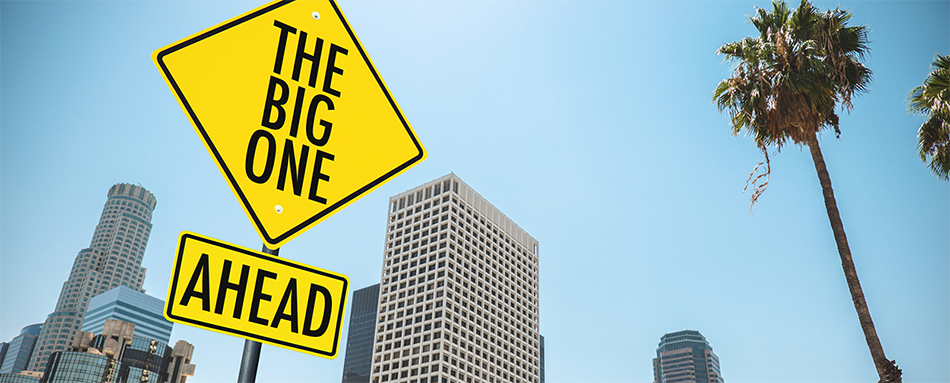Share these tips with your business clients to minimize earthquake risk
Most of the nation assumes California is the primary state affected by earthquakes. But that’s not necessarily true. While the West Coast (California, Oregon and Washington), along with Hawaii and Alaska experience the most quakes, every state can potentially experience temblors. Producers, provide your business owners with these tips to minimize earthquake damage and injury.
Mother Nature’s other curve balls, like hurricanes, winter storms, and often wildfires, at least provide an element of warning before they arrive. Not so with temblors. That element of surprise makes earthquake preparedness even more essential. Investing in strong buildings plus stabilizing non-structural elements within your clients’ structures can reduce the risk of earthquake damage. These same preparation steps can also help provide protection from a tornado, hurricane or other natural disaster. Urge your clients to consider these steps provided by Zurich to minimize earthquake damage and injury.
View our Earthquake Hub for more articles on how to prepare for and what to do during and after a quake.
Pre-quake preparations to minimize earthquake damage and injury
Precisely because scientists have never been able to accurately predict a major earthquake, being prepared is crucial. After all, “Earthquakes don’t kill people. Buildings do.” There are a number of earthquake alert apps specific to various cities or states that are available free. Navigate to your app store and search under “earthquake alert.”
Structural elements
- Encourage clients to retain a qualified structural engineer to evaluate their building, especially if it is older than the seismic design provisions in local building codes.
- Consider retrofits for older buildings so that they meet or exceed current building codes.
- Unreinforced masonry is especially vulnerable in an earthquake and should be retrofitted.
Non-structural elements
- Brace heavy machinery, appliances, containers, tanks and inventory that an earthquake could cause to shift, fall or rupture.
- Lock the rollers of heavy furniture and storage shelving.
- Secure large appliances and install flexible gas and water connections
- Attach computers and towers to desks.
- Anchor file cabinets, mirrors or pictures to wall studs.
- Anchor top-heavy furniture to the wall and place heavy objects on lower shelves
- Secure ceiling lights and false ceilings to joists.
- Install a main gas shut-off device and flexible connections on gas appliances. Train staff on how and when to shut off gas, electricity and water. Keep wrenches or other necessary tools close by.
- Consider applying safety film to windows and glass doors, especially where breakage could cause the most injuries or damage.
Training and preparation
- Designate an emergency response team responsible for fire safety equipment checks, evacuation procedures, first-aid training, drills and both internal / external communication in the event of an earthquake.
- Regularly check the integrity of fire extinguishers, pumps and water tanks. Fire is the most common hazard after an earthquake.
- Assemble disaster preparedness kits and stow in various parts of the building. These should include whistles, dust masks, a portable charger for cell phones, a battery-powered or hand crank radio and a NOAA Weather Radio with tone alert.
- Educate staff on how to protect themselves in a quake. Explain that smoke alarms and sprinkler systems may go off in buildings during an earthquake, even if there is no fire. Depending on where they are when the quake strikes, teach them to:
- Inside a building: “Duck, cover and hold.” Move away from windows and doors. Drop to the floor, take cover under a sturdy table or desk against an inside wall. Grasp one of its legs while covering your head with your other arm.
- Outside a building: Move into a clearing and away from power lines, trees, street lights and buildings. Drop to the ground and wait for the shaking to stop. If you are near unstable slopes or cliffs, be alert for falling rocks or landslides.
- Driving: Pull to the shoulder or off the road, away from traffic, road signs and power lines. Don’t stop on or under bridges or overpasses. Stay in the car with seat belt fastened until the shaking stops. If you resume driving, go slowly and look for possible road damage.
Post-earthquake recovery steps to minimize earthquake damage and injury
Aid your clients in business continuity planning, outlining procedures to organize post-quake recovery. Their plan should address business interruption risks and the possibility that fire protection systems may be damaged by the temblor, rendering them useless or only partially functioning. Their plan should also encompass:
- Guidelines for taking an inventory of damage.
- Priorities for repairs.
- Contact information of contractors critical for repairs and resumption of operations.
- Warnings against hot work until fire protection is fully functional.
- Suppliers’ contact information to order fresh supplies after the temblor.
- Communication procedures with customers, informing them of any delays or reductions in their business capabilities.
Share with your clients the Zurich infographic below, with more earthquake facts and tips.


